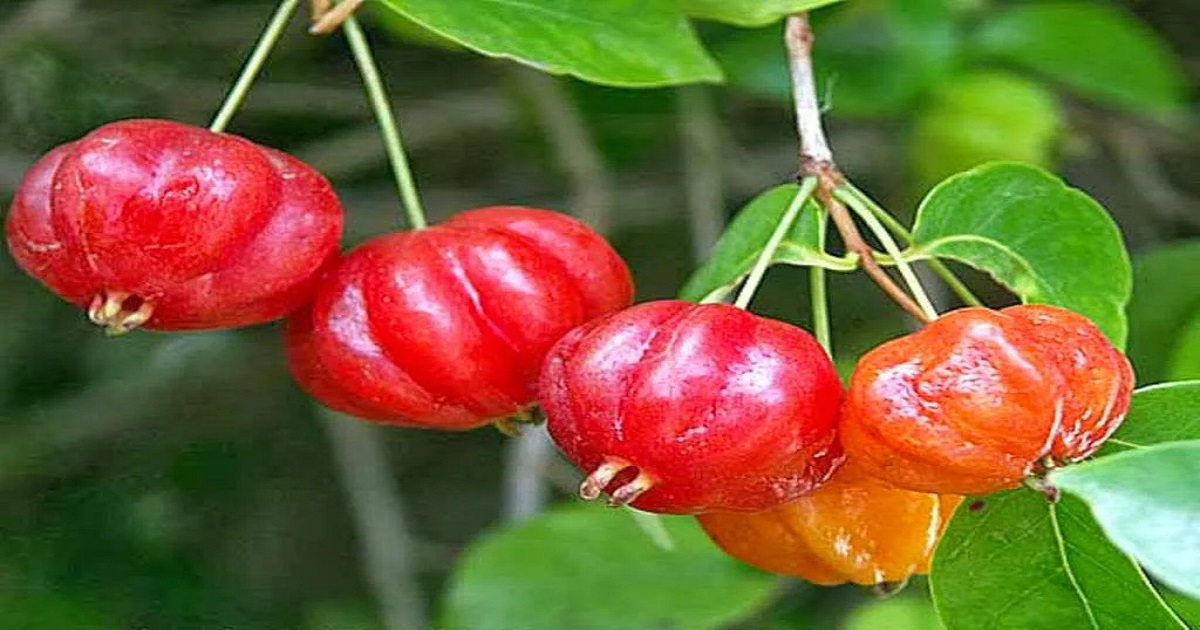Introduction
Muda Pitanga, a vibrant and exotic fruit, has been a staple in many cultures for centuries. But what exactly is Muda Pitanga, and why is it gaining popularity worldwide? Let’s delve into the intriguing world of this fruit, exploring its history, cultivation, nutritional value, and much more.
History of Muda Pitanga
Origin and Discovery
Muda Pitanga, also known as the Surinam cherry, is native to tropical South America. It was first discovered in the rainforests of Brazil and gradually spread to other tropical regions. The indigenous people have utilized this fruit for its nutritional and medicinal properties long before it caught the attention of explorers and botanists.
Historical Uses
Historically, Muda Pitanga was not only a food source but also played a significant role in traditional medicine. The fruit, leaves, and bark were used to treat various ailments, from digestive issues to skin conditions. Its vibrant color and unique flavor also made it a popular choice for making beverages and desserts.
Botanical Description
Physical Characteristics
Muda Pitanga is a small, red, ribbed fruit resembling a miniature pumpkin. It grows on a bushy tree that can reach up to 8 meters in height. The tree has glossy, dark green leaves and small, white, fragrant flowers that bloom throughout the year.
Growth Conditions
This tropical fruit thrives in warm, humid climates. It prefers well-drained soil and can tolerate a range of pH levels, though it flourishes best in slightly acidic to neutral soil. Muda Pitanga is relatively hardy and can withstand brief periods of drought.
Cultivation of Muda Pitanga
Ideal Climate
Muda Pitanga is best grown in tropical and subtropical climates. It requires a lot of sunlight and moderate rainfall. The ideal temperature range for its growth is between 20°C to 30°C.
Soil Requirements
The fruit grows well in various soil types, from sandy to clay soils. However, well-drained, fertile soil enriched with organic matter yields the best results. Soil pH should be maintained between 5.5 and 7.0 for optimal growth.
Planting Techniques
When planting Muda Pitanga, it’s essential to space the plants adequately to ensure they have room to grow. Planting them 3 to 5 meters apart is recommended. They can be grown from seeds or propagated through cuttings.
Maintenance and Care
Regular watering is crucial, especially during the dry season. Mulching around the base helps retain soil moisture and suppress weeds. Pruning helps maintain the tree’s shape and encourages fruit production.
Nutritional Value
Key Nutrients
Muda Pitanga is a powerhouse of nutrients. It is rich in vitamins A, C, and E, and contains significant amounts of calcium, phosphorus, and iron. The fruit is also a good source of dietary fiber.
Health Benefits
The high vitamin C content boosts the immune system, while vitamin A promotes good vision and skin health. The antioxidants present in the fruit help combat free radicals, reducing the risk of chronic diseases.
Culinary Uses
Traditional Recipes
In its native regions, Muda Pitanga is used in a variety of traditional dishes. It is often made into jams, jellies, and juices. The fruit’s unique flavor adds a tangy sweetness to these recipes.
Modern Recipes
Modern cuisine has embraced Muda Pitanga in innovative ways. It is used in salads, smoothies, and even cocktails. Its vibrant color and unique taste make it a versatile ingredient.
Tips for Cooking
When cooking with Muda Pitanga, it’s best to use fresh, ripe fruits. They can be eaten raw or cooked. Pairing them with other tropical fruits enhances their flavor in dishes like fruit salads and salsas.
Medicinal Properties
Traditional Medicine
In traditional medicine, various parts of the Muda Pitanga tree are used. The leaves are often brewed into teas to treat stomach issues and respiratory problems. The fruit itself is used to boost immunity and improve digestion.
Scientific Studies
Modern science has begun to validate many of these traditional uses. Studies have shown that Muda Pitanga has anti-inflammatory and antimicrobial properties. Its high antioxidant content is also being researched for potential cancer-preventing benefits.
Health Benefits
Consuming Muda Pitanga can aid in weight management, improve digestion, and support heart health. Its natural compounds help regulate blood sugar levels, making it beneficial for people with diabetes.
Economic Importance
Commercial Cultivation
Muda Pitanga is cultivated commercially in many tropical and subtropical countries. Its popularity is growing due to its nutritional benefits and versatility in cooking.
Market Demand
The demand for exotic fruits like Muda Pitanga is on the rise. Health-conscious consumers and culinary enthusiasts are driving this demand, making it a lucrative crop for farmers.
Environmental Impact
Role in Ecosystem
Muda Pitanga trees provide habitat and food for various wildlife. Their flowers attract pollinators like bees, which are crucial for maintaining biodiversity.
Sustainability Practices
Sustainable cultivation practices, such as organic farming and agroforestry, are being adopted to grow Muda Pitanga. These practices help preserve the environment and ensure the long-term viability of the crop.
Propagation Techniques
Seed Propagation
Growing Muda Pitanga from seeds is common. The seeds should be planted in a well-drained soil mix and kept moist. They typically germinate in a few weeks.
Vegetative Propagation
Vegetative propagation, such as cuttings or grafting, is another effective method. This technique ensures the new plants retain the desired characteristics of the parent plant.
Pests and Diseases
Common Pests
Muda Pitanga is susceptible to pests like aphids, fruit flies, and scale insects. Regular monitoring and organic pest control methods can help manage these pests.
Disease Management
Fungal diseases like anthracnose can affect Muda Pitanga. Maintaining proper spacing, pruning, and using fungicides can help prevent and control these diseases.
Harvesting
When to Harvest
Muda Pitanga is ready for harvest when the fruit turns bright red and is slightly soft to the touch. Harvesting is typically done by hand to avoid damaging the fruit.
Harvesting Techniques
Gently twist or cut the fruit from the stem. It’s important to handle the fruit carefully to prevent bruising, which can lead to quicker spoilage.
Storage and Preservation
Short-term Storage
Fresh Muda Pitanga can be stored in the refrigerator for up to a week. Keeping them in a breathable container helps maintain their freshness.
Long-term Preservation
For long-term preservation, Muda Pitanga can be frozen, canned, or dried. Freezing retains most of the nutritional value, while drying and canning are excellent for making preserves and snacks.
Challenges in Cultivation
Climate Challenges
Climate change poses a significant challenge for Muda Pitanga cultivation. Extreme weather conditions can affect fruit production and quality.
Soil Challenges
Soil degradation and erosion can also impact cultivation. Implementing soil conservation techniques and using organic fertilizers can help mitigate these issues.
Pest and Disease Challenges
Managing pests and diseases requires constant vigilance. Integrated pest management strategies are crucial for maintaining healthy crops.
Future Prospects
Innovations in Cultivation
Innovations like hydroponics and vertical farming are being explored to grow Muda Pitanga in non-traditional climates. These methods could revolutionize its cultivation.
Potential Market Growth
As the popularity of exotic fruits grows, so does the potential market for Muda Pitanga. Continued research and marketing can help expand its reach.
Conclusion
Muda Pitanga is more than just a tropical fruit; it’s a nutritional powerhouse with a rich history and promising future. Its versatility in culinary uses, combined with its health benefits, makes it a valuable addition to any diet. With sustainable cultivation practices, Muda Pitanga can continue to thrive and support both local ecosystems and economies.



